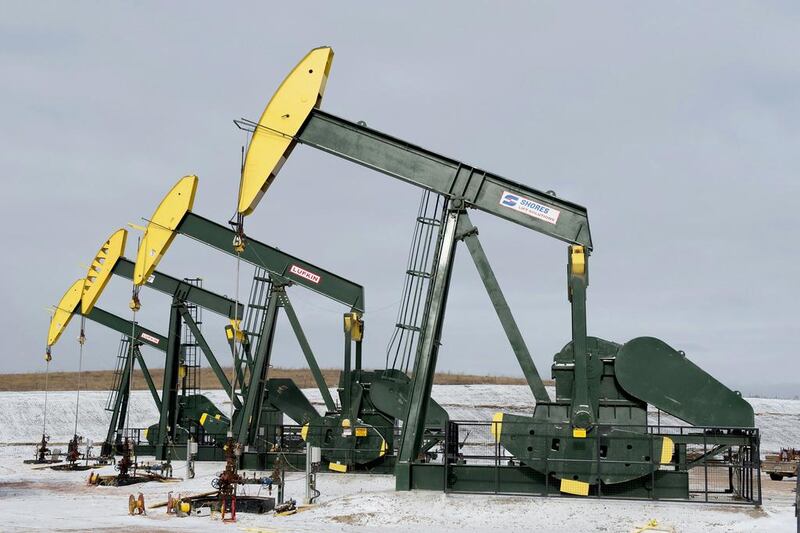A sharp decline in US oil production is forecast in the coming months, the government’s energy information agency reported.
The news helped to stabilise oil prices. World benchmark North Sea Brent crude was at US$40.43 late in the afternoon Arabian Gulf time, up 17 cents from the previous day’s London close when they had reached their lowest in nearly seven years.
US oil output is estimated to have declined by 60,000 barrels per day to 9.2 million bpd last month versus October, according to the EIA, which forecast that production would continue to decline through to the third quarter of next year and average 8.8 million bpd for the whole of next year.
That would represent a 5 per cent decline from this year’s forecast of 9.3 million bpd and an 8 per cent decline from peak production of 9.6 million bpd in April.
The forecast comes after recent data from the US had indicated that production was rising again.
The difference is explained by the more considered approach taken by analysts for the latest report, versus the weekly estimates.
“EIA has several sets of estimates for production in the near-term,” explained Tim Hess, an oil analyst at EIA. For the latest, “analysts use individual judgment when determining what were production levels for recent months, and those estimates can differ from what is published in the weekly report”.
The report also noted that global oil inventories increased by about 1.3 million bpd last month, “putting downwards pressure on Brent prices”, which averaged $44 per barrel, or $4 below the previous month’s average.
On Tuesday, Brent oil prices fell to $39.81, their lowest since the first quarter of 2009 after the financial crisis, spurred partly by the pessimism that followed last Friday’s Opec meeting, when no coherent policy was offered and members said they would pursue individual output maximisation strategies.
The key plank of Opec leader Saudi Arabia’s strategy in the past year has been to force higher-cost oil off the market, especially US production, which had nearly doubled from 2010 to its peak earlier this year.
The EIA forecast that Brent would average $56 per barrel next year, slightly higher than the average so far this year of $54.61.
That forecast is in line with most of the major investment bank forecasts, as well as other major forecasters such as the International Energy Agency and Opec.
Bank of America Merrill Lynch, for example, forecast in a report yesterday that “oil balances are set to improve in the second half [of next year], with the combination of global demand and lower non-Opec output potentially pushing crude oil back up to $55 a barrel”.
Still, the oil market remains under pressure in the short term amid a glut of supply and near-record levels of inventory.
amcauley@thenational.ae
Follow The National's Business section on Twitter





